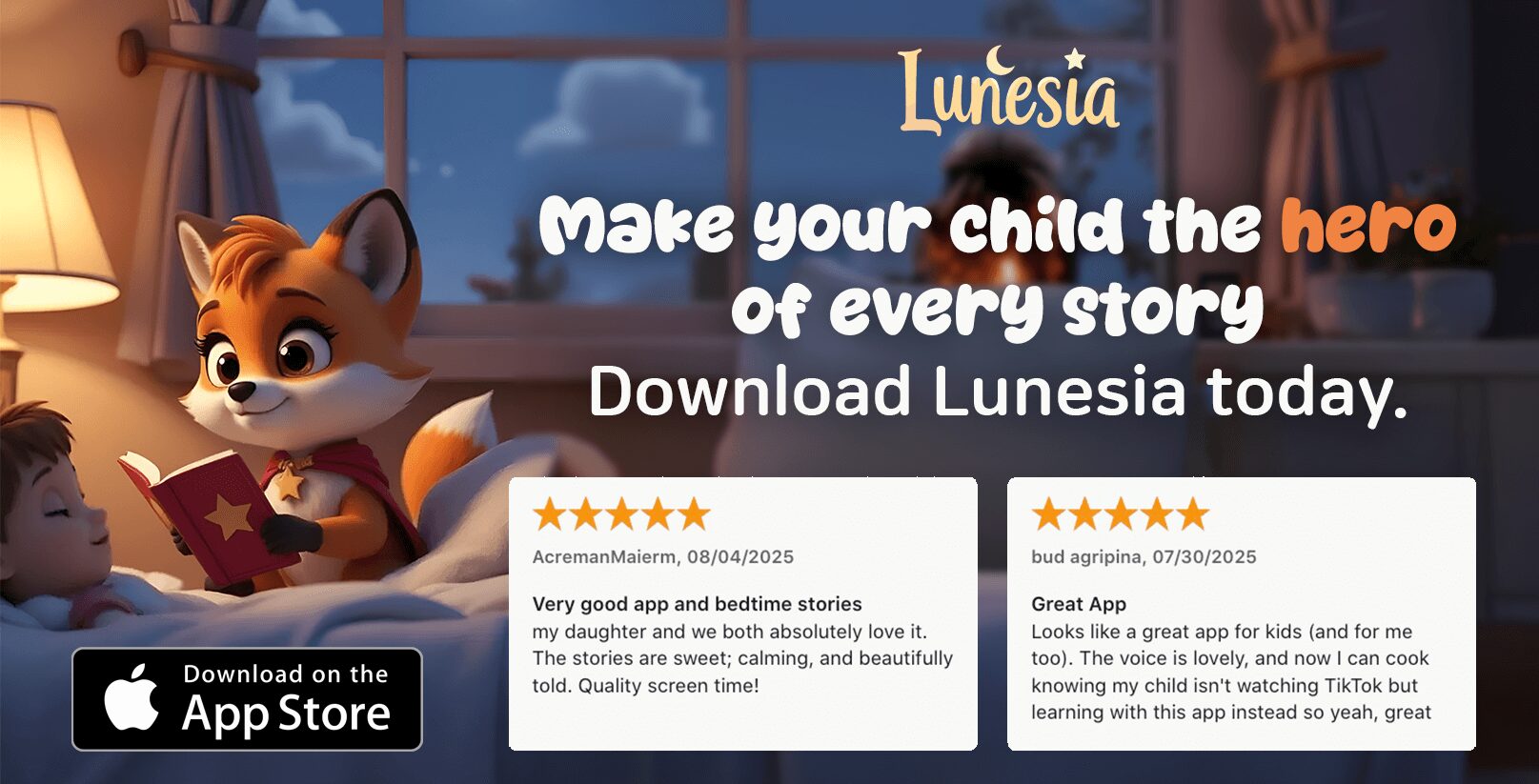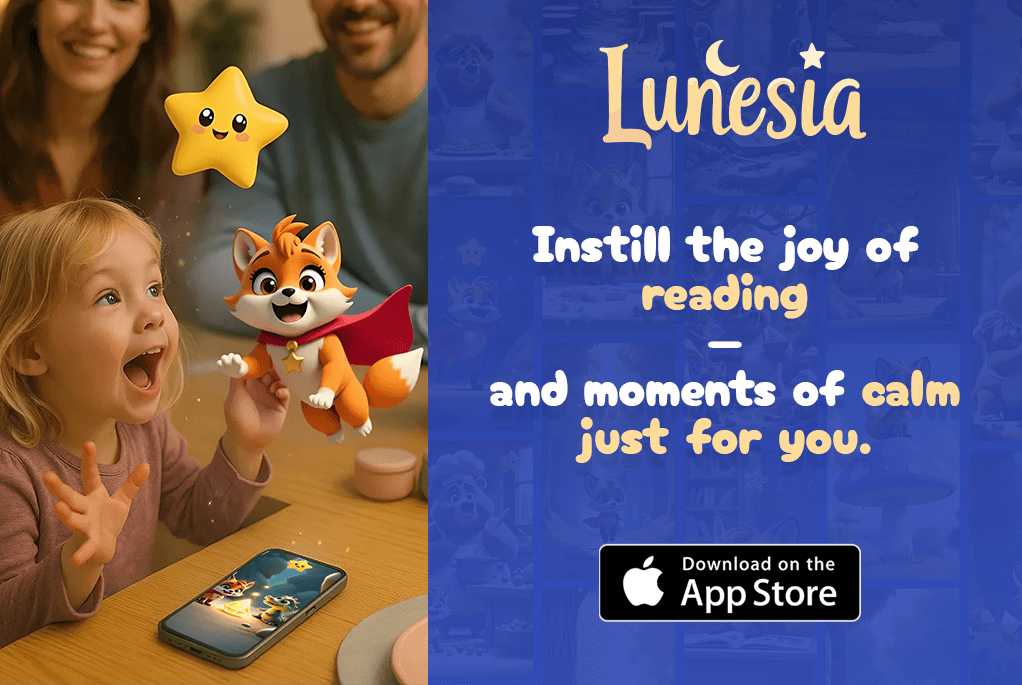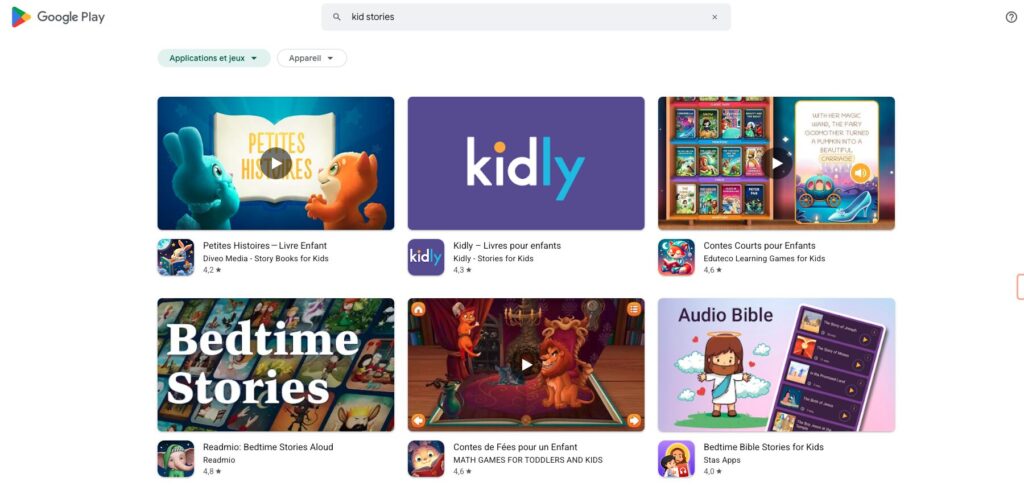There’s something magical about a bedtime story. I still remember the excitement of curling up with a book as a child, eagerly waiting to hear what adventure awaited. Now, as a parent, I see that same spark in my little one’s eyes. It’s a moment of connection, imagination, and calm before the day ends.
Reading aloud isn’t just about helping kids drift off to sleep. It’s about creating memories, sparking curiosity, and building a love for stories. Whether it’s a classic fairy tale or a new favorite, these moments become a cherished part of the bedtime routine.
But when do kids enjoy these moments the most? Is there a specific age when the magic peaks? In this article, we’ll explore how shared reading evolves with time and why it’s such an important part of childhood. Let’s dive in!
Understanding the Benefits of Bedtime Stories
The quiet moments spent with a book before sleep can shape a child’s world in profound ways. It’s not just about the words on the page; it’s about the connection, the calm, and the growth that happens during these shared moments.
Cognitive and Emotional Growth
Reading at night is a powerful tool for development. It helps children transition from the busyness of the day to a peaceful state of mind. The rhythmic flow of a story soothes their thoughts and nurtures their sense of security.
Studies show that children who are read to regularly develop stronger language skills. They hear new words and phrases, which boosts their vocabulary and comprehension. This early exposure lays the groundwork for future learning and success.
Instilling a Love for Reading
When a parent reads to their child, they’re doing more than sharing a tale. They’re creating a lifelong love for books. Classic stories like “The Magic Faraway Tree” captivate young minds and spark their imagination.
These moments also strengthen the bond between parent and child. The shared experience of exploring new worlds together fosters trust and emotional connection. It’s a simple yet meaningful way to show care and attention.
By making reading a regular part of the bedtime routine, parents can instill a positive association with books. This habit encourages children to seek out stories, building a foundation for independent reading and curiosity.
The Impact of Bedtime Stories on Child Development
The magic of a bedtime story lies in its ability to transport young minds to new worlds. It’s not just about the words on the page; it’s about the experiences they create. From sparking creativity to building language skills, these moments are transformative.
Enhancing Imagination
When a child listens to a story, their imagination takes flight. Tales of adventure and wonder encourage them to dream big and think creatively. For example, classics like “The Magic Faraway Tree” captivate with their enchanting worlds, teaching kids to visualize and explore beyond their immediate surroundings.
Parents often share how their children recreate these tales during playtime. This shows how stories fuel creative thinking and problem-solving skills. It’s a gift that keeps giving, long after the book is closed.
Boosting Language Skills
Reading aloud introduces children to new words and phrases. The rhythmic flow of a story helps them absorb language naturally. Studies show that kids who are read to regularly develop stronger vocabularies and better comprehension skills.
For instance, picture books often contain a diverse set of words, enriching a child’s linguistic abilities. This early exposure lays the groundwork for future learning, making them confident readers and communicators.
| Benefit | Example |
|---|---|
| Enhanced Imagination | Children recreate story scenes during playtime. |
| Improved Language Skills | Exposure to new words through picture books. |
| Emotional Connection | Shared reading strengthens parent-child bonds. |
Incorporating heart and adventure into stories makes the experience memorable. It’s not just about the tale; it’s about the connection it fosters. These moments become a cherished part of the day, shaping a child’s development in profound ways.
Exploring the Best Age Bedtime Stories
Every child’s journey with stories is unique, shaped by their growing interests and abilities. While there’s no one-size-fits-all answer, understanding how shared reading evolves can help you make the most of these moments.
Challenges in Assigning an Exact Age
It’s tricky to pinpoint an exact age when kids enjoy stories the most. Reading levels, attention spans, and personal interests vary widely. What captivates a toddler might not hold the same appeal for an older child.
For example, a 3-year-old might love simple, repetitive tales, while a 7-year-old craves adventure and suspense. The key is to observe your kid’s reactions and adapt accordingly.
Age-Wise Recommendations
Here’s a quick guide to what works at different stages:
- Toddlers (1-3 years): Short, rhythmic stories with colorful illustrations. Think classics like “Goodnight Moon.”
- Preschoolers (3-5 years): Simple narratives with relatable themes. Books like “The Very Hungry Caterpillar” are perfect.
- Early Readers (5-7 years): Slightly longer tales with engaging plots. “The Cat in the Hat” is a great choice.
- Older Kids (7-9 years): More complex stories with deeper themes. Series like “Dinosaurs Before Dark” can spark their imagination.
Recognizing Readiness for Complex Narratives
As your child grows, you’ll notice signs they’re ready for more advanced stories. They might ask questions about the plot or express interest in longer books. This is the perfect time to introduce chapter books or tales with multiple characters.
Adapting Themes and Complexity
Tailoring stories to your kid’s developmental stage ensures they stay engaged. For younger children, focus on themes of friendship and discovery. Older kids might enjoy tales of bravery or mystery.
Remember, the goal is to create a positive association with reading. Whether it’s a simple picture book or a thrilling adventure, the right story can make all the difference.
Selecting the Right Story: A Parent’s Guide
Choosing the perfect story for your child can feel like finding a hidden treasure. It’s not just about the words on the page; it’s about creating a moment that resonates with their heart and mind. As a parent, you want to pick a book that sparks joy, curiosity, and connection.
Picking Stories That Resonate
Start by considering your child’s interests and sensitivity. A story about animals might captivate one child, while another might prefer tales of adventure. For example, “The Paper Dolls” by Julia Donaldson uses vibrant illustrations to convey deep emotions, making it a great choice for sensitive readers.
Balance classic tales with new, engaging content. Classics like “Goodnight Moon” offer familiarity, while modern stories introduce fresh themes and perspectives. This mix keeps the bedtime routine exciting and meaningful.
Evaluating Illustrations and Themes
Illustrations play a key role in helping children visualize and derive meaning from a story. Bright, clear images can enhance comprehension and emotional impact. Look for books where the art complements the narrative, like in “The Very Hungry Caterpillar.”
Themes should align with your child’s developmental stage. Younger kids might enjoy simple tales of friendship, while older children might prefer stories with deeper messages. The right thing can make all the difference in creating a memorable experience.
By thoughtfully selecting stories, you’re not just reading a book—you’re building a bridge to your child’s imagination and emotions. It’s a gift that lasts a lifetime.
Designing a Relaxing Bedtime Routine
Creating a calming evening ritual can transform bedtime into a cherished moment. It’s not just about getting your child to sleep; it’s about building a sense of security and connection. A consistent routine helps signal to their body and mind that it’s time to wind down.
Start by setting the stage for relaxation. Dim the lights and keep the room temperature between 65-70°F. Soft background sounds, like rain or waves, can enhance the calming atmosphere. These small touches make a big difference in creating a peaceful setting.
Reading a story is a wonderful way to transition from playtime to sleep. Choose a book that matches your child’s mood and interests. The rhythmic flow of words helps them relax and prepares their mind for rest.
Here are a few tips to make the routine smoother:
- Begin winding down at least one hour before bed.
- Include activities like a warm bath or gentle stretching.
- Limit screen time to avoid overstimulation.
A structured routine not only improves sleep quality but also creates lasting family memories. By making this a daily habit, you’re giving your child the gift of calm and connection.
How to Create a Storytime Environment for Sleep
A peaceful storytime environment can make all the difference in helping your child unwind. The right setting turns reading into a soothing ritual, making the transition from a busy day to a restful night smoother.

Setting the Mood with Lights and Sounds
Lighting plays a big role in creating a calming atmosphere. Dim the lights to signal that it’s bedtime. Soft, warm tones are ideal for relaxation. Pair this with gentle sounds, like white noise or soft music, to enhance the sense of calm.
Research shows that a quiet, soothing environment helps both parent and child relax. This tailored atmosphere makes storytime more enjoyable and effective. It’s a simple way to turn reading into a cherished part of the routine.
Arranging a Comfortable Reading Space
Comfort is key to a successful storytime. Choose a cozy spot with cushions or a soft blanket. Make sure the area is free from distractions, like toys or screens. This helps your child focus on the story and prepares them for sleep.
Personalize the space to make it inviting. A favorite stuffed animal or a special reading lamp can add a touch of warmth. These small details create a sense of security and make the experience memorable.
Eliminating Distractions
To make the most of storytime, minimize interruptions. Turn off the TV and put away devices. This ensures your child’s attention stays on the book and the moment you’re sharing together.
Consistency is also important. Establish a regular storytime setting to build a sense of routine. Over time, this helps your child associate reading with relaxation and sleep.
By thoughtfully designing the environment, you’re not just reading a word—you’re creating a moment of connection and calm. It’s a gift that lasts a lifetime.
Adapting Stories for Different Ages
Children’s love for stories grows as they do, adapting to their changing needs and interests. As a parent, you’ve likely noticed how a book that once captivated your toddler might now seem too simple for your growing child. This is why tailoring stories to their developmental stage is so important.
Tailoring Themes and Narrative Complexity
Younger children thrive on simple, repetitive tales with clear themes. For example, a story about sharing or friendship can resonate deeply with a preschooler. As they grow, their ability to understand more complex narratives increases. Introducing tales with layered plots and multiple characters can keep them engaged.
Books like “The Cat in the Hat” are perfect for early readers, while older kids might enjoy the adventurous twists in “Dinosaurs Before Dark.” The key is to match the thing they’re ready for, ensuring the time spent reading feels both challenging and enjoyable.
Incorporating Adventure and Heart
Adding elements of adventure and emotional depth can make stories more compelling. For younger children, this might mean a tale of a brave little mouse. Older kids might connect with stories that explore themes of courage or resilience, like “The Lion, the Witch and the Wardrobe.”
Emotional resonance is equally important. A story that touches the heart can leave a lasting impact. For instance, “Goodnight Mister Tom” beautifully balances adventure with heartfelt moments, making it a favorite for many families.
By thoughtfully adapting stories, you’re not just reading a book—you’re creating a meaningful experience that grows with your child. It’s a simple yet powerful way to nurture their love for stories and imagination.
Engaging Your Child with Interactive Storytelling
Interactive storytelling can turn a simple tale into an unforgettable adventure. When kids actively participate in the narrative, they’re not just listening—they’re experiencing the story firsthand. This approach not only boosts their interest but also strengthens their comprehension and creativity.
One way to involve your kid is by asking questions during the reading. For example, “What do you think happens next?” or “How would you feel if you were the character?” These prompts encourage critical thinking and make the experience more dynamic.
Role-playing is another effective strategy. Let your child act out parts of the story or use expressive voices for different characters. This not only makes the tale come alive but also helps them connect emotionally with the narrative.
Here are some practical ways to make storytime more interactive:
- Let your child choose parts of the story to read aloud or act out.
- Use props or costumes to bring the tale to life.
- Encourage them to draw scenes from the story after reading.
Interactive storytelling can also deepen the bond between parent and child. By sharing these moments, you’re creating memories that last a lifetime. Plus, it makes bedtime more engaging and enjoyable for everyone.
| Strategy | Benefit |
|---|---|
| Asking Questions | Boosts comprehension and critical thinking. |
| Role-Playing | Enhances emotional connection and creativity. |
| Using Props | Makes the story more tangible and fun. |
By incorporating these techniques, you’re not just reading a story—you’re creating a shared adventure. It’s a simple yet powerful way to nurture your child’s love for stories and imagination.
Using Audio and Visuals to Enhance Storytime
Bringing stories to life with audio and visuals can transform storytime into an immersive experience. Whether it’s the soothing voice of an audiobook or the vibrant illustrations in a picture book, these elements add depth and excitement to the way children engage with stories. Let’s explore how to make the most of these tools.
Audiobooks vs. Read-Alouds
Audiobooks offer a unique way to enjoy stories, especially when parents are short on time. They provide a professional narration that can captivate young listeners. For example, classics like “Charlotte’s Web” come alive with expressive voices and sound effects. However, traditional read-alouds allow for personal interaction, where you can pause to explain or discuss the story.
Here’s a quick comparison:
- Audiobooks: Great for independent listening and introducing new vocabulary.
- Read-Alouds: Foster bonding and allow for tailored explanations.
Benefits of Visual Storytelling
Visual elements in books, like vivid illustrations and thoughtful page layouts, can capture a child’s attention instantly. Picture books such as “Where the Wild Things Are” use art to convey emotions and actions, making the story more accessible. For younger readers, these visuals help them connect the words to the images, enhancing comprehension.
Here are some tips for blending audio and visuals:
- Choose books with rich illustrations to complement the narrative.
- Pair audiobooks with the physical book for a multisensory experience.
- Encourage your child to describe what they see on each page.
By combining these elements, you create a dynamic and engaging storytime that appeals to different learning styles. It’s a simple yet effective way to make reading more enjoyable and impactful.
Incorporating Bedtime Stories into Daily Routines
Building a daily routine around reading can transform chaotic evenings into peaceful moments. When storytime becomes a consistent part of the day, it helps children transition from play to sleep with ease. Parents often share how this simple habit reduces bedtime struggles and creates a sense of calm.
Consistency is key. By linking daytime activities to the evening ritual, you create a natural flow. For example, after dinner, you might move to a cozy reading nook. This signals to your child that it’s time to wind down. Many families find that this approach makes the bedtime routine smoother and more enjoyable.
Here are some practical tips to integrate storytime into your schedule:
- Set a specific time for reading each night to build predictability.
- Pair storytime with other calming activities, like a warm bath or soft music.
- Let your child choose the book to increase their engagement.
Parents who’ve tried this approach often see positive results. One mom shared, “Reading every night has become our special time. It’s not just about the story—it’s about the connection we share.”
Making storytime a non-negotiable part of the day ensures it’s a priority. This consistency not only improves sleep but also strengthens the bond between parent and child. It’s a simple yet powerful way to end the day on a positive note.
| Tip | Benefit |
|---|---|
| Set a specific time | Builds predictability and routine. |
| Pair with calming activities | Enhances relaxation and transition to sleep. |
| Let your child choose the book | Increases engagement and excitement. |
By weaving storytime into your daily routine, you’re creating a cherished ritual that benefits both you and your child. It’s a small change that can make a big difference.
Leading Expert Advice on Story Selection
Selecting the perfect book for bedtime is both an art and a science. It’s not just about picking a story; it’s about choosing one that resonates with your child’s heart and mind. Drawing from insights by childcare experts and seasoned parents, here’s how to make the right choice.
Insights from Parents and Childcare Experts
Experts emphasize the importance of thoughtful story selection. A well-chosen book can foster emotional connection, boost language skills, and spark creativity. For example, a parent shared, “When I pick a story that aligns with my child’s interests, it transforms our bedtime routine into a magical moment.”
Childcare professionals highlight the role of narrative flow and word choice. A tale with rhythmic language and clear themes keeps young listeners engaged. Books like “Goodnight Moon” are praised for their soothing repetition and simple yet powerful messages.
Evaluating Narratives and Visuals
The design of a book matters just as much as its content. Bright, clear illustrations help children visualize the story, enhancing comprehension and emotional impact. Experts recommend choosing books where the art complements the narrative, like in “The Very Hungry Caterpillar.”
Here’s a checklist to guide your selection:
- Does the story align with your child’s interests and sensitivity?
- Are the illustrations vibrant and engaging?
- Is the narrative flow smooth and easy to follow?
- Does the book encourage interaction or discussion?
By following these expert-backed tips, you’re not just reading a story—you’re creating a meaningful experience that nurtures your child’s growth and imagination.
Bedtime Stories for a Calmer Night’s Sleep
A well-chosen story can turn a restless evening into a peaceful night. After a long day, children often need help winding down, and the right book can make all the difference. Narratives like “Bedtime Stories for Hard Days” are praised for their ability to calm both the child and the parent, creating a shared moment of relaxation.
The key is to strike a balance between excitement and calm. A story that’s too thrilling might overstimulate, while one that’s too dull could fail to hold attention. For example, tales with gentle rhythms and soothing tones, like “Goodnight Moon,” help children transition smoothly to sleep.
Here’s how to choose the perfect book for a calm evening:
- Look for narratives with soft, repetitive language that feels comforting.
- Choose stories with themes of safety and relaxation, like “The Paper Dolls.”
- Avoid plots with high tension or sudden surprises that might disrupt the calm.
Personal experiences often highlight the transformative power of a well-selected story. One parent shared, “Switching to calming tales turned our bedtime routine from a battleground into a cherished moment. It’s now our favorite part of the day.”
By thoughtfully selecting stories that match the pace of a calm evening, you’re not just reading a book—you’re creating a soothing ritual that benefits the whole family. It’s a simple yet powerful way to end the day on a peaceful note.
Integrating Classic Tales with Modern Adventures
Blending old and new tales creates a unique reading experience for kids. By combining timeless narratives with fresh ideas, you can keep storytime exciting and engaging. This approach not only honors the charm of classic stories but also introduces children to contemporary themes and visuals.
Timeless Books and Contemporary Favorites
Classic tales like “The Gruffalo” by Julia Donaldson have a special place in our hearts. Their rhythmic language and memorable characters make them enduring favorites. However, modern adaptations bring new life to these stories, making them relatable for today’s kids.
For example, updated versions of fairy tales often include diverse characters and modern settings. This blend of old and new helps children connect with the story while appreciating its timeless message. It’s a wonderful way to spark a love for reading across generations.
Illustrations play a key role in enhancing both classic and modern tales. Vivid artwork can bring the page to life, making the narrative more immersive. Whether it’s the whimsical drawings in a classic book or the bold, modern visuals in a new adaptation, these images captivate young minds.
Here’s how you can experiment with mixing genres:
- Pair a classic tale with a modern retelling to compare themes and styles.
- Choose books with vibrant illustrations to enhance the storytelling experience.
- Encourage your child to create their own version of a favorite story.
By integrating classic and modern elements, you’re not just reading a book—you’re creating a rich, diverse storytelling journey. It’s a simple yet powerful way to nurture your child’s imagination and curiosity.
Parent Tips: From Dinnertime to Bedtime Stories
Turning evening chaos into calm can start with a simple routine. The journey from dinner to dreams doesn’t have to be stressful—it can be magical instead. By balancing daily schedules and adding a few creative touches, you can create a soothing transition that benefits the whole family.
Balancing Daily Schedules
A well-structured evening routine can reduce bedtime resistance and make the process smoother. Start by setting a consistent schedule. For example, begin winding down at least one hour before bed. This helps signal to your child that it’s time to relax.
Pair storytime with other calming activities, like a warm bath or soft music. These small adjustments create a sense of predictability, which is comforting for kids. As one parent shared, “When we stick to our routine, bedtime becomes a cherished moment, not a battle.”
Creating Magical Moments
Make evenings special by adding a touch of magic. Dim the lights and create a cozy reading nook. Let your child choose the book of the day. This simple act gives them a sense of control and excitement.
Reading together isn’t just about the story—it’s about the connection you build. Use expressive voices or act out parts of the tale to make it more engaging. These small efforts turn reading into a shared adventure.
Here are some practical tips to make the transition smoother:
- Set a specific time for reading each night to build predictability.
- Pair storytime with calming activities like a warm bath or soft music.
- Let your child choose the book to increase their engagement.
| Tip | Benefit |
|---|---|
| Set a specific time | Builds predictability and routine. |
| Pair with calming activities | Enhances relaxation and transition to sleep. |
| Let your child choose the book | Increases engagement and excitement. |
By thoughtfully designing your evening routine, you’re not just reading a story—you’re creating a moment of connection and calm. It’s a simple yet powerful way to end the day on a positive note.
Personalizing Storytime for Maximum Engagement
Personalized storytelling can turn reading into a cherished family tradition. When you tailor the experience to your kid’s interests, it becomes more than just a story—it’s a moment of connection and joy. By adding personal touches, you can make storytime a highlight of the bedtime routine.

Crafting Your Own Story Ritual
Creating a unique ritual makes storytime special. Start by selecting a favorite toy or theme to accompany each story. For example, if your child loves animals, bring a stuffed bear or lion to the reading nook. This simple thing can make the experience more engaging and memorable.
Another idea is to let your child choose the book of the day. Giving them control increases excitement and makes them feel involved. Over time, these small rituals become a cherished part of the evening.
Interactive Story Elements for Kids
Interactive storytelling invites your child to participate actively. Ask questions like, “What do you think happens next?” or “How would you feel in this situation?” This approach not only boosts engagement but also enhances comprehension and critical thinking.
Role-playing is another effective method. Let your child act out parts of the story or use expressive voices for different characters. These techniques make the tale come alive and deepen their emotional connection to the narrative.
Here are some creative ways to personalize storytime:
- Customize classic tales to reflect your child’s everyday experiences.
- Incorporate their name or favorite activities into the story.
- Use props or costumes to bring the narrative to life.
| Method | Benefit |
|---|---|
| Personalized Rituals | Builds excitement and consistency. |
| Interactive Questions | Enhances comprehension and engagement. |
| Role-Playing | Deepens emotional connection. |
By experimenting with these techniques, you’re not just reading a story—you’re creating a meaningful experience that grows with your child. It’s a simple yet powerful way to nurture their love for stories and imagination.
Conclusion
Ending the day with a shared moment of connection can create lasting memories. Integrating a story into your evening routine not only calms your child but also strengthens your bond. Experts agree that this simple habit boosts language skills, sparks creativity, and fosters a love for reading.
Parents often share how carefully chosen tales transform their bedtime routine into a cherished ritual. Whether it’s a classic book or a modern adventure, the right story nurtures both mind and heart. Experiment with different storytelling methods to discover what resonates most with your family.
By making this a consistent part of your day, you’re not just reading—you’re building a foundation for lifelong curiosity and connection. It’s a small change that can make a big difference, turning time together into a moment of calm and joy.
FAQ
At what age do kids enjoy bedtime stories the most?
Kids typically start enjoying bedtime stories around 2 to 3 years old, but the love for storytelling can continue well into their early school years. It’s a great way to bond and encourage a lifelong love for reading.
What are the benefits of bedtime stories for children?
Bedtime stories help with cognitive and emotional growth, enhance imagination, and boost language skills. They also create a calming routine that prepares kids for sleep.
How do I choose the right story for my child?
Pick stories that resonate with your child’s interests and age. Look for engaging illustrations and themes that align with their developmental stage. Adventure and heartwarming tales often work well.
How can I make storytime more interactive?
Use voices for different characters, ask questions, or let your child predict what happens next. You can also incorporate props or act out parts of the story together.
Should I use audiobooks or read aloud myself?
Both have benefits! Reading aloud creates a personal connection, while audiobooks can introduce new storytelling styles. Mixing both can keep storytime fresh and exciting.
How can I create a relaxing environment for storytime?
Dim the lights, play soft background music, and choose a cozy spot. This helps set the mood and signals to your child that it’s time to wind down.
Can I adapt stories for different ages?
Absolutely! Tailor the narrative complexity and themes to suit your child’s age. Younger kids enjoy simple, repetitive stories, while older ones might prefer more detailed adventures.
How do I integrate bedtime stories into our daily routine?
Make it a consistent part of your evening schedule, right after dinner or before brushing teeth. Consistency helps kids look forward to this special time.
What are some classic and modern story recommendations?
Classic tales like “Goodnight Moon” and “The Very Hungry Caterpillar” are timeless. Modern favorites include “The Day the Crayons Quit” and “Dragons Love Tacos.” Mix and match to keep it fun!
How can I personalize storytime for my child?
Craft your own story ritual by including their favorite characters or creating stories together. Interactive elements like letting them choose the book or adding their name to the story can make it extra special.




